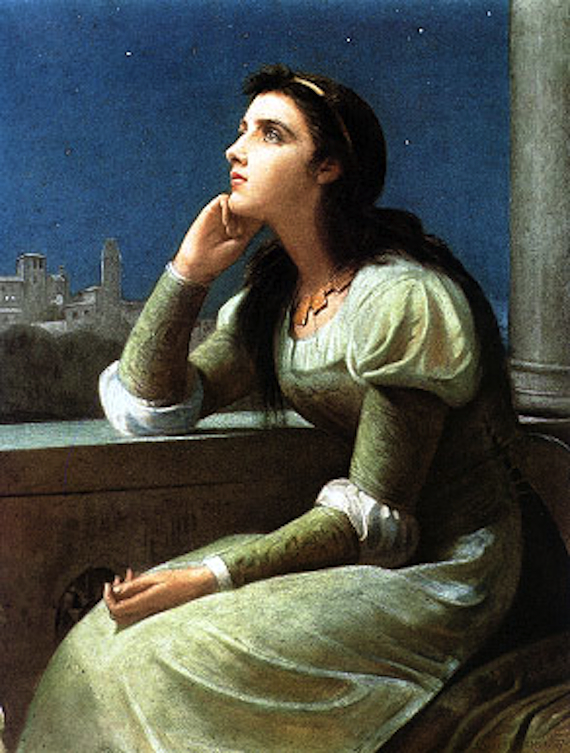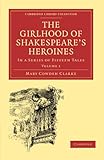
Today we celebrate the 450th anniversary of Shakespeare’s birth. Why are we celebrating it? A simple answer is that Shakespeare’s plays still speak to us. But for me, as for so many women since Shakespeare wrote his first play in around 1590, my response to his plays is complicated by my gender. Virginia Woolf wrote in the first draft of To the Lighthouse that “man has Shakespeare & women have not.” This is true. At the same time, this is not true.

 Women Making Shakespeare, a new anthology from The Arden Shakespeare series edited by Gordon McMullan, Lena Cowen Orlin, and Virginia Mason Vaughan, illustrates both sides of this paradox. The anthology was designed as a tribute to Ann Thompson, the general editor of the Arden series, who edited the massive Arden volume of all three texts of Hamlet with Neil Taylor, and who throughout her career has broken new ground in feminist criticism of Shakespeare, especially with her 1997 anthology (with Sasha Roberts) Women Reading Shakespeare 1660–1900. Thompson has also, in her role as general editor of the Arden series, dramatically increased the number of women editors of Shakespeare’s plays. Her work and her influence are worth celebrating because even today’s statistics on the numbers of women editors and commentators of Shakespeare are as damning as the VIDA statistics.
Women Making Shakespeare, a new anthology from The Arden Shakespeare series edited by Gordon McMullan, Lena Cowen Orlin, and Virginia Mason Vaughan, illustrates both sides of this paradox. The anthology was designed as a tribute to Ann Thompson, the general editor of the Arden series, who edited the massive Arden volume of all three texts of Hamlet with Neil Taylor, and who throughout her career has broken new ground in feminist criticism of Shakespeare, especially with her 1997 anthology (with Sasha Roberts) Women Reading Shakespeare 1660–1900. Thompson has also, in her role as general editor of the Arden series, dramatically increased the number of women editors of Shakespeare’s plays. Her work and her influence are worth celebrating because even today’s statistics on the numbers of women editors and commentators of Shakespeare are as damning as the VIDA statistics.
The anthology contains short essays on anything related to women and Shakespeare — as characters, as actresses, as critics and scholars, as educators, as suffragists and feminists, and as readers — over the past 450 years. I would like to pose some questions that plumb the variety the anthology offers: what does reading Shakespeare mean for women? Was Shakespeare proto-feminist or patriarchal? Has anything changed in 450 years?
We might investigate these questions through the history of Juliet. Shakespeare’s Juliet is bold, Romeo’s equal. She initiates their relationship, telling Romeo “take all myself” before she even knows for certain of his interest or commitment, bubbling over with her desire past the bounds of what might be considered correct behavior, and yet her frankness, as she calls it, is what makes her magnetic. And she talks and talks — of all Shakespeare’s heroines, only Cleopatra and Rosalind have more lines. Juliet might be another Rosalind, were this not a tragedy; I can imagine her saying, with Rosalind, “Do you not know I am a woman? When I think, I must speak.”
Juliet defies her father’s plan to arrange her marriage, equivocating to Paris to avoid suspicion, and bravely agrees to the Friar’s plan to fake her death and rescue her from her family’s tomb. Shakespeare lets Juliet, rather than Romeo, describe their wedding night: “O, I have bought the mansion of a love / But not possessed it.” And in the last couplet of the last scene, the play becomes the story of “Juliet and her Romeo.” While the Friar chides Romeo for his “womanish” tears, Juliet stands out as the more mature partner. This is Juliet’s play.
Juliet’s equality with Romeo may have been underscored at its original performances by the fact that young men played both roles. But the thing about Shakespeare’s women, the reason why we still love Rosalind and Juliet today, is that they don’t read on the page or on the stage like young men in drag, trying to show what a second gender is. These are true-hearted women. Juliet is frank, and petulant, and brave, and chatty, and loving. She is authentic.

 Restoration theater brought women actresses onto the stage for the first time — a woman played Desdemona for the first time in 1660 — but it also brought changes in how women were presented on stage. The prologue to the 1660 Othello declared: “I come . . . To tell you news, I saw the Lady drest; / The woman playes to day, mistake me not, / No Man in Gown, or Page in Petty-Coat; / A Woman to my knowledge.” Thus began the tradition in which actresses’ bodies were voyeuristically put on display and actresses became equated with prostitutes. At the same time, Juliet’s frankness, especially about sex, became seen as unseemly. A 1679 version of Romeo and Juliet, Thomas Otway’s Caius Marius, cut the wedding night speech and instead called marriage “lawful Rape.” Lavinia, the Juliet-figure, wakes just before her lover’s death, but in a state of confusion that elides Juliet’s strength and intelligence.
Restoration theater brought women actresses onto the stage for the first time — a woman played Desdemona for the first time in 1660 — but it also brought changes in how women were presented on stage. The prologue to the 1660 Othello declared: “I come . . . To tell you news, I saw the Lady drest; / The woman playes to day, mistake me not, / No Man in Gown, or Page in Petty-Coat; / A Woman to my knowledge.” Thus began the tradition in which actresses’ bodies were voyeuristically put on display and actresses became equated with prostitutes. At the same time, Juliet’s frankness, especially about sex, became seen as unseemly. A 1679 version of Romeo and Juliet, Thomas Otway’s Caius Marius, cut the wedding night speech and instead called marriage “lawful Rape.” Lavinia, the Juliet-figure, wakes just before her lover’s death, but in a state of confusion that elides Juliet’s strength and intelligence.
In 1744, Theophilus Cibber’s abridged Romeo and Juliet kept Otway’s alterations and, further, condemned Juliet’s exchange with Romeo in the balcony scene; her mother, suspicious of Juliet’s aversion to marriage with Paris, supposes it must be because Juliet has done something to compromise her chastity: “What sensual, lewd Companion of the Night / Have you been holding Conversation with, / From open Window, at a Midnight hour?” she demands. To be disobedient is to be unchaste.
 Both Cibber and David Garrick, in his 1750 version, rewrote the closing couplet, deleting the line that foregrounds Juliet “and her Romeo,” and Garrick further deleted any hint that Juliet knows anything about sex. By 1797, with Ann Radcliffe’s novel The Italian, a retelling of the play, Ellena is propriety itself when she learns that her lover has overheard her beneath her balcony. She turns pale, shuts her window, and doesn’t speak to him. In 1845, Charlotte Cushman played Romeo to her sister Susan’s “beautifully confiding and truly feminine” Juliet — in other words, perfectly demure, perfectly silent, a model of Victorian womanhood.
Both Cibber and David Garrick, in his 1750 version, rewrote the closing couplet, deleting the line that foregrounds Juliet “and her Romeo,” and Garrick further deleted any hint that Juliet knows anything about sex. By 1797, with Ann Radcliffe’s novel The Italian, a retelling of the play, Ellena is propriety itself when she learns that her lover has overheard her beneath her balcony. She turns pale, shuts her window, and doesn’t speak to him. In 1845, Charlotte Cushman played Romeo to her sister Susan’s “beautifully confiding and truly feminine” Juliet — in other words, perfectly demure, perfectly silent, a model of Victorian womanhood.

 Shakespeare was increasingly appropriated around this time to provide models for womanhood. Often these were paired with arguments for better access to education for girls, Kate Chedgzoy argues in her essay in this anthology, as with Mary Lamb, who composed her Tales from Shakespeare (1807) with her brother Charles partly as a way of “redressing the limitations of the education on offer to girls.” Girls could not read Shakespeare directly (what if they read Juliet’s wedding night speech?), but they could read the tales as mediated through an educator. Lamb herself later became a tutor to Mary Cowden Clarke, teaching her Latin and to read verse. Cowden Clarke’s The Girlhood of Shakespeare’s Heroines (1850) had a similar aim, but it is worth noting that each girl’s story is framed as a march from girlhood to education to marriage. The purpose of education is not, at least primarily or overtly, to give women a voice and power for self-definition; the track of womanhood offered through these Shakespeare tales is girl to teacher of children (or apprentice mother) to mother.
Shakespeare was increasingly appropriated around this time to provide models for womanhood. Often these were paired with arguments for better access to education for girls, Kate Chedgzoy argues in her essay in this anthology, as with Mary Lamb, who composed her Tales from Shakespeare (1807) with her brother Charles partly as a way of “redressing the limitations of the education on offer to girls.” Girls could not read Shakespeare directly (what if they read Juliet’s wedding night speech?), but they could read the tales as mediated through an educator. Lamb herself later became a tutor to Mary Cowden Clarke, teaching her Latin and to read verse. Cowden Clarke’s The Girlhood of Shakespeare’s Heroines (1850) had a similar aim, but it is worth noting that each girl’s story is framed as a march from girlhood to education to marriage. The purpose of education is not, at least primarily or overtly, to give women a voice and power for self-definition; the track of womanhood offered through these Shakespeare tales is girl to teacher of children (or apprentice mother) to mother.
 In Juliet’s case, as treated by Cowden Clarke, her education is at fault for her eventual tragic end. Ignored by her parents through her girlhood, her faulty education accounts for her outspokenness and self-will, and it is these qualities, not her star-crossed fate, that lead to her death. This was the same period as Henrietta and Thomas Bowdler’s The Family Shakespeare (1807), in which many of Juliet’s lines are scrubbed and she becomes more submissive; and of Helen Faucit, an actress who, at the same time that William Charles Macready was restoring the performance of Shakespeare’s original texts, deleted even more of Juliet’s lines than usual. Her performances were called “types of noble womanly nature” and a reviewer commented: “her delicacy of taste and elevation of thought have succeeded in banishing from [Shakespeare’s] characters…all that, from the change of manners, sometimes in the hands of others, has become painful. Such is the atmosphere of purity with which she is surrounded, that nothing at variance with it can enter…” And yet actresses at this time were still equated with prostitutes.
In Juliet’s case, as treated by Cowden Clarke, her education is at fault for her eventual tragic end. Ignored by her parents through her girlhood, her faulty education accounts for her outspokenness and self-will, and it is these qualities, not her star-crossed fate, that lead to her death. This was the same period as Henrietta and Thomas Bowdler’s The Family Shakespeare (1807), in which many of Juliet’s lines are scrubbed and she becomes more submissive; and of Helen Faucit, an actress who, at the same time that William Charles Macready was restoring the performance of Shakespeare’s original texts, deleted even more of Juliet’s lines than usual. Her performances were called “types of noble womanly nature” and a reviewer commented: “her delicacy of taste and elevation of thought have succeeded in banishing from [Shakespeare’s] characters…all that, from the change of manners, sometimes in the hands of others, has become painful. Such is the atmosphere of purity with which she is surrounded, that nothing at variance with it can enter…” And yet actresses at this time were still equated with prostitutes.
The idealization of Shakespeare’s heroines as “types of noble womanly nature” had the effect, as Lois Potter notes in this anthology, of simplifying, Bowdlerizing, the plays. But it also simplified and silenced the women. A noble, virtuous Juliet, as in Faucit’s portrayal, was, compared to Shakespeare’s original, a silent woman. Let me return to one of my original questions: was Shakespeare a proto-feminist or was he patriarchal? My history of Juliet thus far suggests that he was, somehow, a sixteenth century feminist. Now let’s look at The Taming of the Shrew.
 It is almost unbelievable that Katherina does not have more lines than Juliet or Rosalind. She is outspoken. She is argumentative. She is everything we love about Juliet and Rosalind cranked up a few notches. But on her character and her play, female editors have been almost universally silent. There have been two female editors of the play so far: Ann Thompson and, commissioned by Thompson for the Arden series, Barbara Hodgson.
It is almost unbelievable that Katherina does not have more lines than Juliet or Rosalind. She is outspoken. She is argumentative. She is everything we love about Juliet and Rosalind cranked up a few notches. But on her character and her play, female editors have been almost universally silent. There have been two female editors of the play so far: Ann Thompson and, commissioned by Thompson for the Arden series, Barbara Hodgson.
What do we do with Shrew? A woman is physically abused by her husband until she shows symptoms of Stockholm syndrome, and only then, the play seems to suggest, will they live happily ever after. Bianca, the woman who is not abused during her wooing and wedding, shows signs of becoming a shrew and a scold afterward. Which method is being held up as ideal?
Farah Karim-Cooper’s essay in Women Making Shakespeare notes that some modern productions have found the only way to make the play palatable to modern audiences is to set it in the past. The guilt we feel over Katherina’s treatment by Petrucchio is only palatable at a distance of 450 years. But she also provides some hope in context: ideal sixteenth century wives were both obedient and silent. Obedient Katherina becomes, but never silent; the play ends with a lengthy speech from Katherina. She has a voice! It is possible that Shakespeare is unravelling the courtship rituals that called for a false hierarchy between men and women that would be immediately undermined or reversed within marriage. Bianca has the appearance of submission — but which would you rather have as a marriage partner? Nevertheless, there remains the troubling feeling that this play, and therefore Shakespeare, approve of Petrucchio’s behavior, and the abuse and silencing of a woman in the name of ruling a wife.
When actresses were first allowed to perform publicly in England, they generally did not address the audience directly in a prologue or epilogue. As Sonia Massai notes in this anthology, when they did, their speeches stressed the “exceptional quality” of the occasion. Then, as this essay traces, for much of the history of women’s performance of Shakespeare, actresses were associated with prostitutes, even up to the Victorian era. Ailsa Grant Ferguson’s essay takes this history up to World War I, talking about Gertrude Elliott’s work to legitimize female performance and management through the creation of “the Shakespeare Hut” to entertain soldiers passing through London. This all-female Shakespeare was acceptable because it was “war work,” because it was patriotic, and because, the actresses for the most part being middle aged, their performances were positioned as maternal care, and thus a-sexual, for the very young men about to go to the front.
 One of the last essays in the anthology, by Kevin A. Quarmby, talks about the contemporary performance trend of “sexing up” Goneril in King Lear, and suggests that both in contemporary criticism and in performance, transgression by a woman, even political transgression as in Goneril’s case, is still seen as equivalent to sexual transgression. Because Goneril betrays a man (Lear) politically, therefore she is also a whore. This makes her little better than a cipher — sexualizing her deprives her of her right to a legitimate political voice, and therefore silences her.
One of the last essays in the anthology, by Kevin A. Quarmby, talks about the contemporary performance trend of “sexing up” Goneril in King Lear, and suggests that both in contemporary criticism and in performance, transgression by a woman, even political transgression as in Goneril’s case, is still seen as equivalent to sexual transgression. Because Goneril betrays a man (Lear) politically, therefore she is also a whore. This makes her little better than a cipher — sexualizing her deprives her of her right to a legitimate political voice, and therefore silences her.
What has changed in 450 years of performing, reading, writing Shakespeare? The history of women interacting with Shakespeare’s plays is also the history of women’s rights, suffrage, and of the feminist movement. It is a history of women being silenced and of finding ways to speak out anyway. Shakespeare has been, and is, an uneasy ally in this history. He complicates but also enriches our idea of what a woman is. Too often we are still Katherinas, forced to compromise our dignity in order to retain our voice, or else our insistence on speaking is blamed for our tragedies, like Juliet. But the reason why we still read Shakespeare’s women, is that they are women. Goneril, Juliet, and Katherina are finally not ciphers. Whatever else they may be, they are true women, and they have true voices.
Image via Wikimedia Commons








